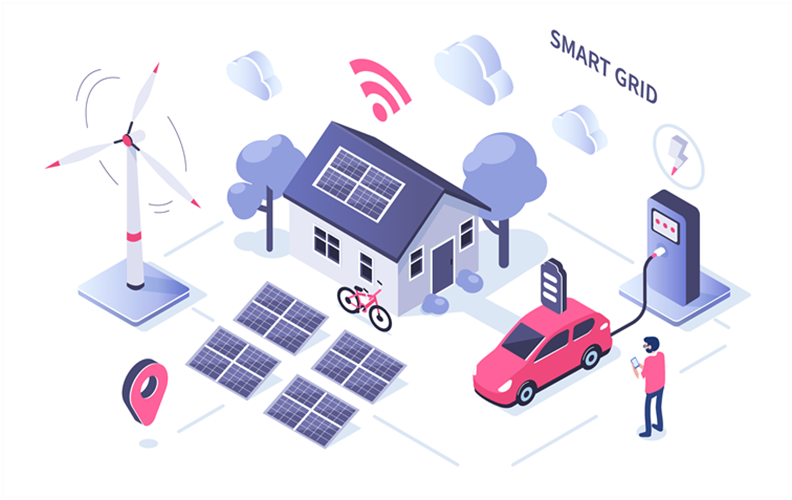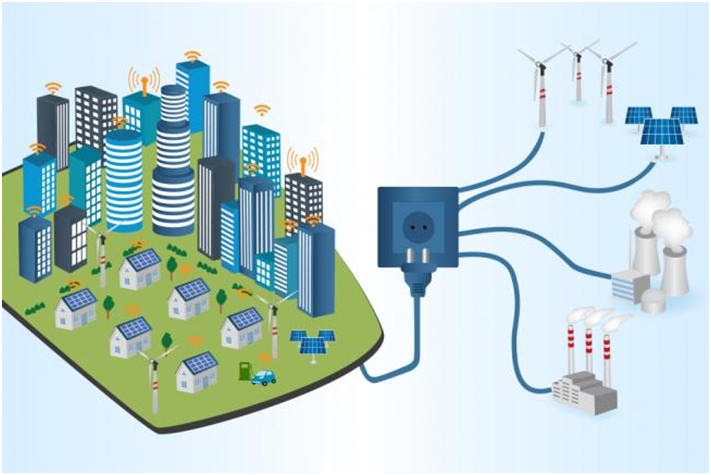
Charles R. Goulding and Preeti Sulibhavi consider upcoming 3D printing applications in a change to the power grid.
Powering Up
Since the days of Thomas Edison and Westinghouse, the United States has been utilizing a one-way electric power grid. Meaning, electricity is generated at utility power plants then distributed to a commercial or residential user.
Now, in a major transformation analogous to the horse and buggy to automobile conversion, the U.S. has new generation sources that need to go in reverse from users to the grid. The need, speed and extent of this conversion are astounding. New electricity generation is coming from fast-growing alternative energy sources such as solar and wind. Brookfield Renewable Partners, one of the leading alternative energy suppliers, announced in February 2021 they had a huge increase in their fourth quarter 2020 sales and earnings. We have recently written a Fabbaloo article on major European alternative energy companies who are sensing this opportunity and entering the U.S. market.
Led by Tesla, the electric car market is quickly expanding and GM’s recent announcement by its CEO, Mary Barra, that it would stop making fossil fuel cars by 2035 shocked the auto industry. GM is spending $27 billion by 2025 to make 30 electric vehicle (EV) car models and is building a new electric battery plant in Ohio.
The EV charging station market is the focus of multiple SPACs and IPOs. The Tennessee Valley Authority has just announced a major EV charging station installation program. Revel has just announced that it is building a large charging station for multiple categories of EV vehicles in Williamsburg, Brooklyn.
Once the entire nation is blanketed with EV charging stations, consumers will be very comfortable purchasing EVs. The batteries in parked EV cars during work hours will enable decentralized electricity generation that can be poured into the grid. Establishing the reverse electricity flow in a two-way grid requires substantial infrastructure. In our May 2020 smart grid Fabbaloo article, we described the 3D printing opportunities for leading companies with 3D printing capabilities in this area including Eaton Corporation and Jabil.

The Research & Development Tax Credit
Whether it’s used for creating and testing prototypes or for final production, 3D printing is a great indicator that R&D Credit eligible activities are taking place. Companies implementing this technology at any point should consider taking advantage of R&D Tax Credits.
Enacted in 1981, the now permanent Federal Research and Development (R&D) Tax Credit allows a credit that typically ranges from 4%-7% of eligible spending for new and improved products and processes. Qualified research must meet the following four criteria:
- Must be technological in nature
- Must be a component of the taxpayer’s business
- Must represent R&D in the experimental sense and generally includes all such costs related to the development or improvement of a product or process
- Must eliminate uncertainty through a process of experimentation that considers one or more alternatives
Eligible costs include U.S. employee wages, cost of supplies consumed in the R&D process, cost of pre-production testing, U.S. contract research expenses, and certain costs associated with developing a patent.
On December 18, 2015, President Obama signed the PATH Act, making the R&D Tax Credit permanent. Since 2016, the R&D credit has been used to offset Alternative Minimum Tax (AMT) for companies with revenue below $50MM and, startup businesses can obtain up to $250,000 per year in payroll tax cash rebates.
Charging Ahead…
The two-way Smart Grid market is inevitable. The 3D printing industry can make the smart grid transformation more efficient with a new generation of 3D printed alternative energy and smart grid products.
